With the rapid development of global urbanization and the increasing awareness of environmental protection, urban lighting design has transformed from a pure engineering field into a multidimensional challenge that integrates aesthetics, energy efficiency, and sustainability. With the promulgation and implementation of the “Urban Road Lighting Design Standard,” urban lighting design has been given a new mission—to achieve energy saving, emission reduction, and environmental protection while safeguarding traffic safety and enhancing the city’s image. In this context, solar street lights, with their unique advantages, have become a new force in urban lighting design.
Solar Street Lights: A New Choice for Urban Lighting
Solar street lights, as a new choice for urban lighting, not only achieve energy self-sufficiency but also provide an efficient and environmentally friendly lighting solution by integrating solar photovoltaic panels, energy storage batteries, LED lamps, and intelligent control systems. This new type of lighting not only meets the lighting requirements in the “Urban Road Lighting Design Standards” but also becomes a new favorite in urban lighting design due to its environmental protection and energy-saving features.
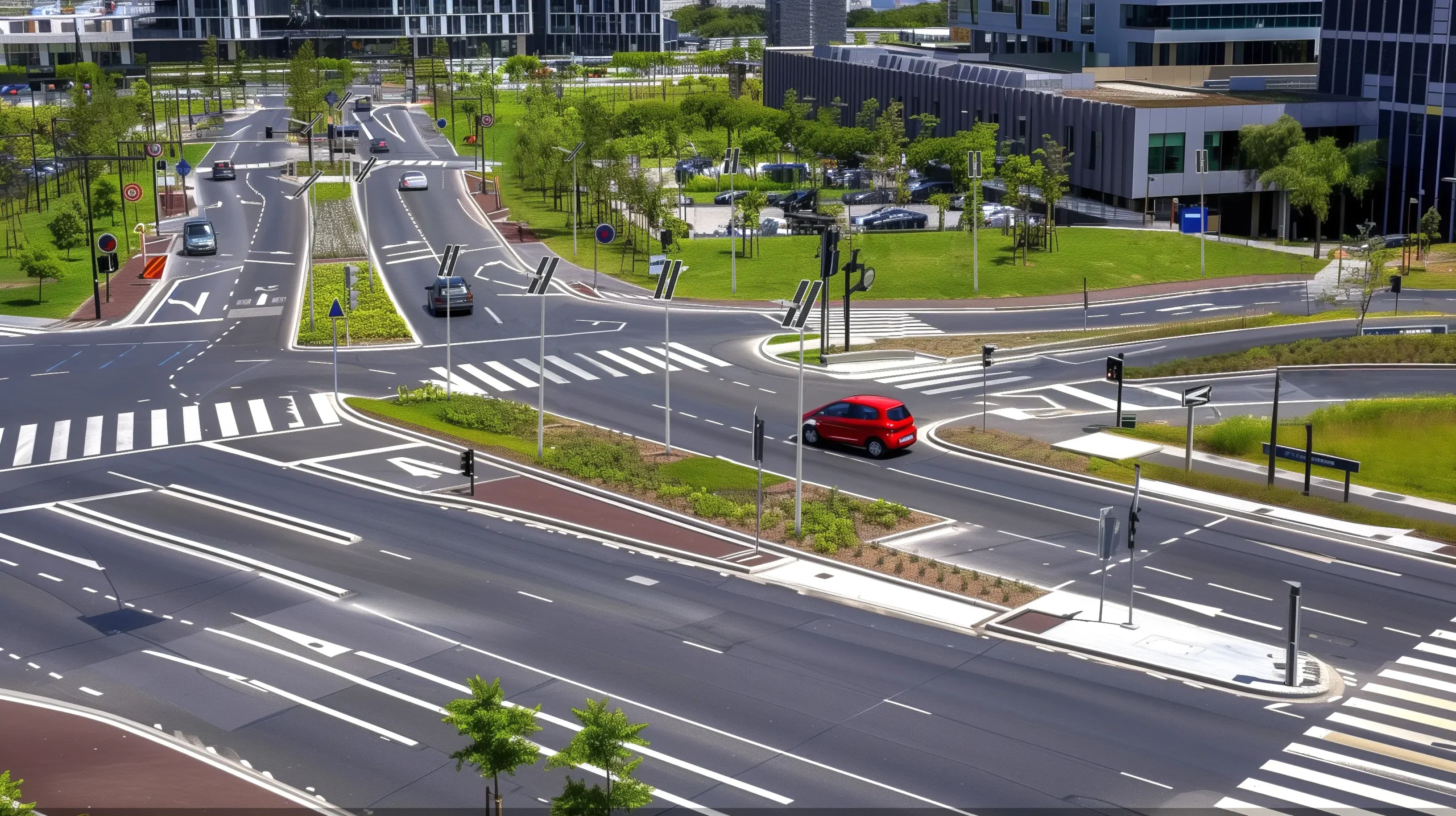
Meeting the “Urban Road Lighting Design Standards” Requirements
The design and implementation of solar street lights strictly follow the “Urban Street Lighting Design Standards” to ensure that global applications can meet local lighting quality and energy-saving requirements.
- Adhering to Lighting Standards
- Classification of Road Lighting: Solar street lights provide graded lighting based on road types and usage scenarios. For instance, expressways and trunk roads require higher lighting standard values to ensure driving safety, while secondary and branch roads can have appropriately lowered standards based on traffic flow. Specific areas such as intersections and sidewalks also require lighting design according to actual needs.
- Lighting Evaluation Indicators
- Brightness and Illuminance: Solar street light design must ensure that road brightness and illuminance meet standard regulations, using brightness as the primary evaluation system while accepting illuminance as a secondary evaluation system.
- Uniformity: This includes the overall uniformity of brightness and longitudinal uniformity to ensure road surface lighting without obvious dark or over-bright areas, providing a uniform visual environment.
- Glare Limitation: By designing anti-glare devices on lamps to limit high-angle light intensity, glare interference to drivers and pedestrians is reduced.
- Energy Saving Standards
- The design of solar street lights should fully consider energy-saving requirements, reducing lighting power density (LPD) by adopting high-efficiency light sources, lamps, and control systems to achieve energy-saving goals. Intelligent control and dimming systems can automatically adjust lighting levels according to actual demand, further reducing energy consumption.
Lighting Methods and Design Requirements
- 1.Lighting Mode Selection
-
- Solar street lights can adopt conventional lighting, high-pole lighting, or semi-high-pole lighting. Specific selections should be based on a comprehensive consideration of road characteristics, lighting requirements, and landscape effects. For example, in areas requiring large-area lighting, such as intersections, high mast lighting or semi-high mast lighting can be used.
- 2.Lamp Arrangement
-
- The arrangement of solar street lamps should be planned reasonably according to factors like road width, traffic flow, and lighting demand. Methods such as single-side arrangement, double-side staggered arrangement, and double-side symmetrical arrangement can be considered. Through reasonable lamp arrangement, the best lighting effect and uniformity can be achieved.
-
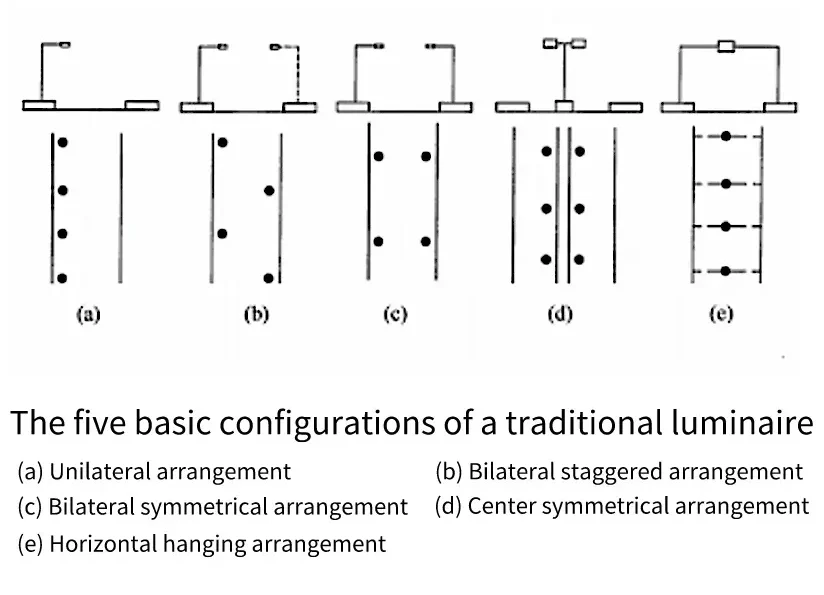
- 3.Lamp Installation
-
- Parameters such as installation height, spacing, and overhang length of solar street lights should be determined by calculation. These parameters directly affect lighting effects and energy consumption. Installations should ensure lamps are stable and reliable and comply with relevant safety regulations.
- 4.Special Section Lighting Design
-
-
- For special sections like planar intersections, curved sections, ramps, etc., solar street light design needs to meet specific lighting requirements to enhance safety. Enhancements in lighting level and appropriate lamp arrangements, such as single-sided, staggered, or symmetrical arrangements, are necessary for intersections. For curved road sections, luminaires should be arranged along the outside of the curve, with adjustments to spacing and overhang length to improve road direction visibility.
-
The following are three special roadway zone lighting design requirements:
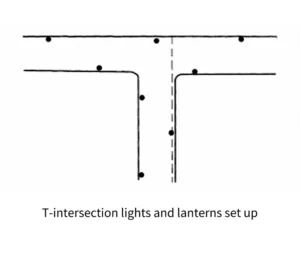
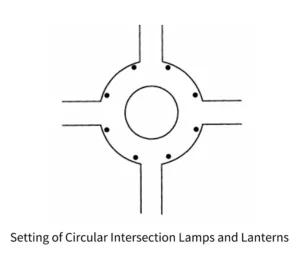
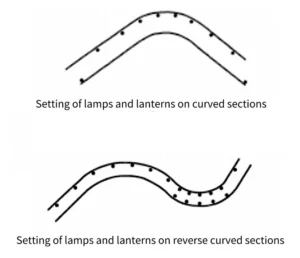
Coordination of Non-functional Lighting
- When decorative lighting is set up on both sides of the road, the design of solar street lights should ensure no conflict with functional lighting. Environmental coordination and visual comfort should be considered to ensure the overall aesthetic and comfort of the lighting effect.
The design and application of solar street lights not only meet the strict requirements of the Urban Road Lighting Design Standard but also achieve multiple benefits of energy saving, environmental protection, and aesthetics through innovative technology, bringing new ideas and value to urban lighting design.
Innovative Applications: The Advantages of Solar Street Lights In addition to meeting basic lighting requirements, solar street lights also show many innovative advantages in urban lighting design:
- Energy Saving and Environmental Protection: Solar street lights use renewable energy—solar power—for electricity generation without an external power supply. This reduces reliance on traditional energy sources and significantly lowers carbon emissions, aiding in the city’s green development. Notably, advanced solar street light products like the Delta series feature adjustable dual-panel designs that address sunlight angle issues when installing luminaires on both sides of the road, making charging more efficient and further enhancing energy-saving and environmental protection effects.
- Economy: Although the initial investment cost of solar street lights is relatively high, the long-term savings in electricity and maintenance costs far exceed the initial investment. The Delta series solar street lights come with SRESKY’s newly developed x-storm technology, achieving thermal balance in the battery pack and extending product life with a warranty of 6 years, enhancing economic viability.
- Intelligent Control: Modern solar street lights are equipped with advanced intelligent control systems that can perform automatic switching and brightness adjustment. The Delta series solar street lights even feature multi-functional remote controls, allowing adjustments to lighting modes, color temperatures, brightness, and PIR on/off, improving lighting efficiency and reducing energy consumption and maintenance costs.
- Humanized Design: The Delta series solar street lights also come with integrated bracket arms to expand lighting brightness, providing a better lighting environment for pedestrians and vehicles. They also have dual-color temperature LEDs that can be switched or mixed as needed to offer warm or bright lighting effects, meeting the lighting needs of different scenarios.
As a lighting method in accordance with the Urban Road Lighting Design Standard, the application of solar street lights in urban lighting design shows great potential and value. The Delta series solar street lights bring new choices for urban lighting with their high efficiency, intelligence, and humanized design. With continuous technological progress and innovation, we have reason to believe that solar street lights will play an increasingly important role in the field of urban lighting, bringing more light and vitality to the city at night.